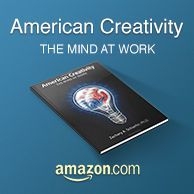If you disagree with someone, how do you know when to rip off the band-aid or when to make a constructive criticism sandwich? People who rip off band-aids are always blunt and to the point with their ideas, whereas our sandwich makers prefer to provide compliments and critiques. These strategies are not quite as simple, however, when in conflict with a member of another race. Most of us spend the majority of our time with people who look, think, and act like us. We rarely venture out of our social comfort zones to learn about the cultural norms of other races, and we rely on overdramatized media (and personal) stereotypes to form our conclusions.
When I was asked to conduct two guest lectures at Southern Illinois University Edwardsville in early May 2013 on the topic of Interracial Conflict Management Skills, I was really excited and really nervous. I wanted to share my enthusiasm and passion for proactively dealing with conflict, and yet I was nervous because I took into account my identity as a white male. I wanted to make sure I spoke to the whole audience and not just white people, so I scrapped the normal PowerPoint lecture format and instead used images and a brief video to promote discussion.
The course was an intense week-long class that lasts 8-hours each day, and the students very quickly get to understand each other’s experiences and beliefs. It is an emotionally charged class with lots of self-disclosure. I could smell the tension, fear, and excitement that enveloped the classroom as the students shared their ideas. These factors created the perfect environment for learning, and it was occurring right before my eyes!
My theme was that Conflict Is Life Fertilizer. Much like fertilizer, conflict is often nasty, dirty, stinky, and miserable to deal with, but it is also the substance from which relationships are strengthened, organizations thrive, and nations become more responsive to its people’s needs. Since most people avoid conflicts and have a negative perspective about it, they are reluctant to get into disagreements with others. This reluctance is amplified when the disagreement is with a member of another race. Below are the highlights of the guest lectures:
Selective Perceptions and Reality
When we have very limited interactions with other races, we overgeneralize our brief encounters and media images to represent how an entire race behaves or thinks. We focus on the things we already know, believe, or understand and overlook the ideas and actions that don’t already fit our preconceived stereotypes. To manage our “selective perception” tendencies, look for positive actions from other races that challenge our unhelpful stereotypes. If we don’t do this, our perceptions become reality.
Conflict Myths
- All conflicts can be resolved. This is simply not true. Spend time figuring out whether you should manage an ongoing conflict or if it can actually be resolved.
- All conflicts are misunderstandings. Not true. Many times we understand exactly what the other person is saying and we simply disagree or don’t like the other person.
- All conflict is destructive. Absolutely not true! Whether a conflict is destructive or productive completely depends on how the conflict is handled and communicated. Without disagreement, our world would become stagnant.
Emotional Triggers and Audience
You need to know what actions and words set you off and consciously avoid negative emotional displays when you encounter them in conflict. You must also remember that the person with whom you are disagreeing might not have the same conflict management style as you. Try writing things down when in conflict. This allows the other person to get their point across and helps you capture your thoughts, feelings, and disagreements.
Summary
To experience the growth and productive opportunities associated with interracial conflict, I encouraged the audience to seek out experiences where they can learn about and interact with other races. I suggested joining the Big Brother Big Sister program, getting involved in extracurricular activities or sports, joining student clubs, and engaging members of other races in informal conversations. Being flexible and reflective with our conflict management styles helps us clearly express our disagreements with other humans, regardless of their race. If you are comfortable and respectful when in an interracial conflict, you will be perceived as a culturally competent communicator, thereby increasing your credibility with more groups of people.
Conflict helps people develop sound character when they have the composure to accept the things they cannot change, the courage to change the things they can, and the wisdom to know the difference.



